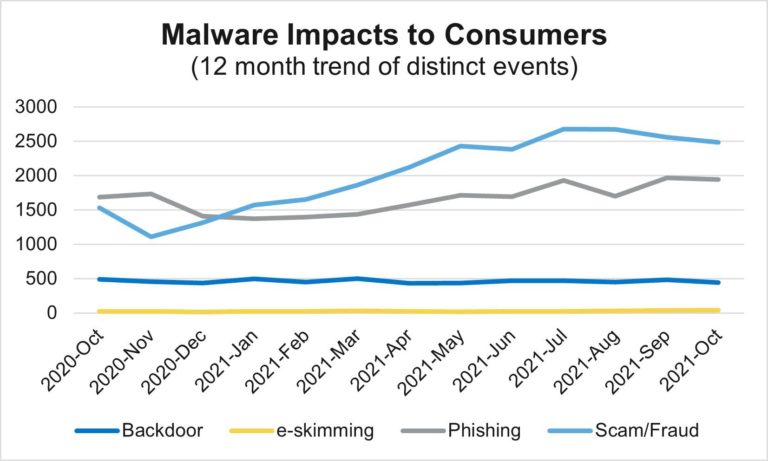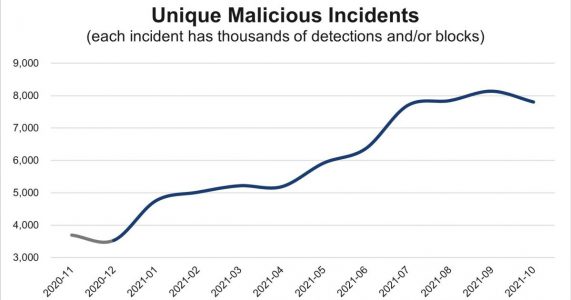Strangely, the approaching holiday season offers a respite from the escalating malware trend throughout 2021. The number of active malware events dropped to 7,799 in October, a 4% decrease compared to September. Driving the negative malware impact on consumers, scams continue their growth trajectory with distinct incidents increasing 52% throughout 2021. [See Squid Game scam]
While the ever-slight decrease may seem strange—more online shoppers should attract bad actors— it’s typical during this time of year. The increased online traffic actually makes it more expensive for bad actors to access the digital advertising ecosystem to spread exploit kits, keystroke loggers, ransomware, and more.
Malware Impact on Consumers
A critical sore spot remains: year-over-year malware events have almost doubled since last October. In this period, scams, redirects and suspicious activity dominate the malware landscape. When viewed from the consumer impact it puts things into perspective. [Figure 1]

Consumers are on the receiving end of most malware attacks. While phishing and backdoor downloads (e.g., ransomware, keystroke logger, rootkits, etc.) have remained fairly constant, consumers are experiencing increased e-skimming and scam attacks (which have increased 52% throughout 2021). These attacks seek to collect consumer information—both financial and personal—to leverage for future harm. This harm comes in many scenarios, from targeting misinformation and low quality goods to direct account/device takeover and financial theft.
The Media Trust works with our partners to not only block these attacks but also identify the offending partner—a critical step in remediating attack scale and thwarting future ones. Clearly, the broader digital ecosystem needs help. Let us know if that means you!

